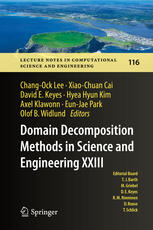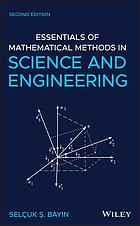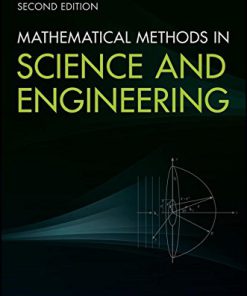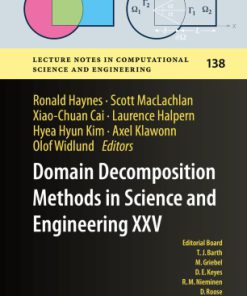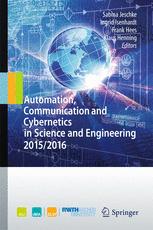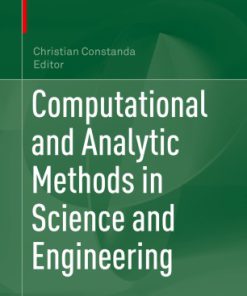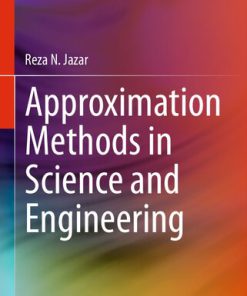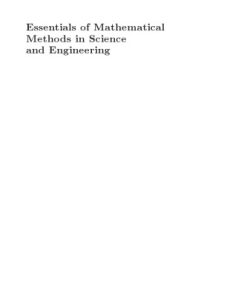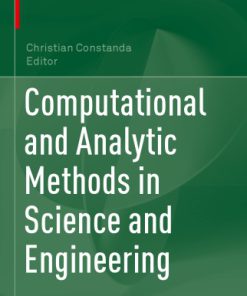Splitting Methods in Communication Imaging Science and Engineering 1st Edition by Roland Glowinski ISBN 3319415875 9783319415871
$50.00 Original price was: $50.00.$25.00Current price is: $25.00.
Splitting Methods in Communication, Imaging, Science, and Engineering 1st Edition by Roland Glowinski – Ebook PDF Instant Download/Delivery: 3319415875, 9783319415871
Full download Splitting Methods in Communication, Imaging, Science, and Engineering 1st Edition after payment
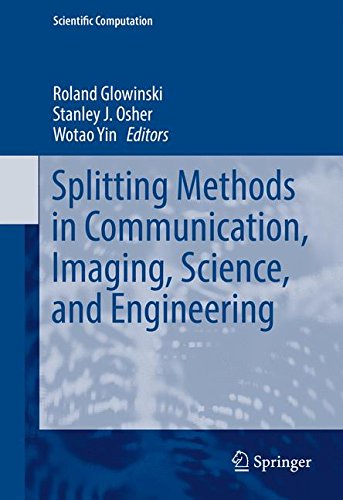
Product details:
ISBN 10: 3319415875
ISBN 13: 9783319415871
Author: Roland Glowinski
This book is about computational methods based on operator splitting. It consists of twenty-three chapters written by recognized splitting method contributors and practitioners, and covers a vast spectrum of topics and application areas, including computational mechanics, computational physics, image processing, wireless communication, nonlinear optics, and finance. Therefore, the book presents very versatile aspects of splitting methods and their applications, motivating the cross-fertilization of ideas.
Splitting Methods in Communication, Imaging, Science, and Engineering 1st Table of contents:
1 Introduction
1 Motivation and Background
2 Lie’s Schemes
3 On the Strang Symmetrized Operator-Splitting Scheme
4 On the Solution of the Sub-initial Value Problems
5 Further Comments on Multiplicative Operator-Splitting Schemes
6 On ADI Methods
7 Operator Splitting in Optimization
8 Bregman Methods and Operator Splitting
References
2 Some Facts About Operator-Splitting and Alternating Direction Methods
1 Introduction
2 Operator-Splitting Schemes for the Time Discretization of InitialValue Problems
2.1 Generalities
2.2 Time-Discretization of (2.1) by Lie’s Scheme
2.3 Time-Discretization of (2.1) by Strang’s Symmetrized Scheme
2.4 Time-Discretization of (2.1) by Peaceman-Rachford’s Alternating Direction Method
2.5 Time-Discretization of (2.1) by Douglas-Rachford’s Alternating Direction Method
2.6 Time-Discretization of (2.1) by a Fractional θ-Scheme
2.7 Two Applications: Smallest Eigenvalue Computation and Solution of an Anisotropic Eikonal Equatio
2.7.1 Synopsis
2.7.2 Application to Some Eigenvalue Computation
2.7.3 Application to the Solution of an Anisotropic Eikonal Equation from Acoustics
2.8 Time-Discretization of (2.1) by a Parallel Splitting Scheme
3 Augmented Lagrangian Algorithms and Alternating Direction Methods of Multipliers
3.1 Introduction
3.2 Decomposition-Coordination Methods by AugmentedLagrangians
3.2.1 Abstract Problem Formulation. Some Examples
3.2.2 Primal-Dual Methods for the Solution of Problem (2.39): ADMM Algorithms
3.3 On the Relationship Between Alternating DirectionMethods and ALG2, ALG3
4 Operator-Splitting Methods for the Direct Numerical Simulationof Particulate Flow
4.1 Generalities. Problem Formulation
4.2 A Fictitious Domain Formulation
4.3 Solving Problem (2.79)–(2.84) by Operator-Splitting
4.4 Numerical Experiments
4.4.1 Generalities
4.4.2 First Test Problem: Settling of Three Balls in a Vertical Narrow Tube
4.4.3 Motion of 300 Neutrally Buoyant Disks in a Two-Dimensional Horizontal Channel
5 Operator-Splitting Methods for the Numerical Solution of Nonlinear Problems from Condensate and Pl
5.1 Introduction
5.2 On the Solution of the Gross-Pitaevskii Equation
5.3 On the Solution of Zakharov Systems
6 Applications of Augmented Lagrangian and ADMM Algorithmsto the Solution of Problems from Imaging
6.1 Variational Models for Image Processing
6.1.1 Generalities
6.1.2 Total Variation and the ROF Model
6.1.3 Regularization Using TV2
6.1.4 Regularization Using the Euler’s Elastica Energy
6.1.5 Regularization Using the Image Graph Mean Curvature
6.1.6 Interface Problems: Chan-Vese Segmentation Model, Labeling Techniques, Min-Cut, and Continuous
6.1.7 Segmentation Models with Higher Order Regularization
6.2 Fast Numerical Algorithms for Variational Image Processing Models Based on Operator- Splitting a
6.2.1 Parallel Splitting Schemes for the ROF Model
6.2.2 A Split-Bregman Method and Related ADMM Algorithm for the ROF Model
6.2.3 An Augmented Lagrangian Method for the Continuous Min-Cut and Max-Flow Problems
6.2.4 A Split-Bregman Method and Related ADMM Algorithm for a Second Order Total Variation Model
6.2.5 An Augmented Lagrangian Method for the Euler’s Elastica Model
6.2.6 An Augmented Lagrangian Method for the L1-Mean Curvature Model
7 Further Comments and Complements
References
3 Operator Splitting
1 Introduction
2 Splitting for Ordinary Differential Equations
2.1 Gaining an Order of Accuracy by Taking an Average
2.2 Higher Order Methods
2.3 Convection and Diffusion
2.4 A Reaction-Diffusion PDE: Splitting Linear from Nonlinear
2.5 Stability of Splitting Methods
2.6 Ordinary Splitting Does NOT Preserve the Steady State
3 Balanced Splitting: A Symmetric Strang Splitting That Preserves the Steady State
3.1 Balanced Splitting Preserves the Steady State
3.2 Splitting Fast from Slow
4 A Very Special Toeplitz-Plus-Hankel Splitting
4.1 All Matrix Functions f(bold0mu mumu KKKKKK) Are Toeplitz-Plus-Hankel
4.2 The Wave Equation Is Toeplitz-Plus-Hankel
References
4 Convergence Rate Analysis of Several Splitting Schemes
1 Introduction
1.1 Notation
1.2 Assumptions
1.3 The Algorithms
1.4 Basic Properties of Averaged Operators
2 Summable Sequence Lemma
3 Iterative Fixed-Point Residual Analysis
3.1 o(1/(k+1)) FPR of Averaged Operators
3.1.1 Notes on Theorem 1
3.2 o(1/(k+1)) FPR of Relaxed PRS
3.3 O(1/Λk2) Ergodic FPR of Fejér Monotone Sequences
4 Subgradients and Fundamental Inequalities
4.1 A Subgradient Representation of Relaxed PRS
4.2 Optimality Conditions of Relaxed PRS
4.3 Fundamental Inequalities
5 Objective Convergence Rates
5.1 Ergodic Convergence Rates
5.2 Nonergodic Convergence Rates
6 Optimal FPR Rate and Arbitrarily Slow Convergence
6.1 Optimal FPR Rates
6.1.1 Notes on Theorem 5
6.2 Arbitrarily Slow Convergence
7 Optimal Objective Rates
7.1 Ergodic Convergence of Minimization Problems
7.2 Optimal Nonergodic Objective Rates
8 From Relaxed PRS to Relaxed ADMM
8.1 Primal Objective Convergence Rates in ADMM
9 Conclusion
References
A Further Applications of the Results of Section 3
1.1 o(1/(k+1)2) FPR of FBS and PPA
1.2 o(1/(k+1)2) FPR of One Dimensional DRS
B Further Lower Complexity Results
2.1 Ergodic Convergence of Feasibility Problems
2.2 Optimal Objective and FPR Rates with Lipschitz Derivative
C ADMM Convergence Rate Proofs
3.1 Dual Feasibility Convergence Rates
3.2 Converting Dual Inequalities to Primal Inequalities
3.3 Converting Dual Convergence Rates to Primal Convergence Rates
D Examples
4.1 Feasibility Problems
4.2 Parallelized Model Fitting and Classification
4.2.1 Auxiliary Variable
4.2.2 Splitting Across Examples
4.2.3 Splitting Across Features
4.3 Distributed ADMM
5 Self Equivalence of the Alternating Direction Methodof Multipliers
1 Introduction
1.1 ADM Works in Many Different Ways
1.2 Contributions
1.3 Organization
2 Notation, Definitions, and Assumptions
3 Equivalent Problems
4 Primal-Dual Equivalence of ADM
4.1 Primal-Dual Equivalence of ADM on (5.1) with ThreeSubproblems
4.2 Example: Basis Pursuit
4.3 Example: Basis Pursuit Denoising
5 ADM as a Primal-Dual Algorithm on the Saddle-Point Problem
6 Equivalence of ADM for Different Orders
7 Equivalence Results of Relaxed PRS
8 Application: Total Variation Image Denoising
References
6 Application of the Strictly Contractive Peaceman-Rachford Splitting Method to Multi-Block Separabl
1 Introduction
2 Preliminaries
2.1 The Variational Inequality Reformulation of (6.5)
2.2 Some Notation
3 Global Convergence
4 Worst-Case Convergence Rate
4.1 Worse-Case Convergence Rate in a Nonergodic Sense
4.2 Worse-Case Convergence Rate in the Ergodic Sense
5 A Divergence Example
5.1 Divergence of the Direct Application of the SC-PRSM Algorithm (6.10)
5.2 Divergence of the E-SC-PRSM Algorithm (6.7)
6 Numerical Results
6.1 Image Restoration with Mixed Impulsive and Gaussian Noises
6.2 Robust Principal Component Analysis with Missing and NoisyData
6.3 Quadratic Discriminant Analysis
7 Conclusions
References
7 Nonconvex Sparse Regularization and Splitting Algorithms
1 Early History of Nonconvex Regularization for Sparsity
2 Forward-Backward Splitting and Thresholdings
3 Coordinate Descent Methods
4 Other Methods
References
8 ADMM and Non-convex Variational Problems
1 Introduction and Synopsis
2 On the ADMM Based Solution of Equilibrium Problems in Incompressible Finite Elasticity
2.1 Introduction. Problem Formulation
2.2 On the Existence of Solutions to Problem (8.116)
2.3 On the ADMM Solution of Problem (8.116)
3 On the ADMM Based Solution of the Dirichlet Problemfor the Elliptic Monge-Ampère Equation in Dime
3.1 Introduction. Synopsis
3.2 Problem Formulation
3.3 An Augmented Lagrangian Approach for the Solution of Problem (8.149)
3.4 Numerical Experiments
4 Application to the Solution of a Non-smooth Eigenvalue Problemfrom Visco-plasticity
4.1 Formulation. Motivation
4.2 Some Regularization Procedures
4.3 Finite Element Approximation of Problem (8.177)
4.4 Applying ALG2 to the Solution of Problem (8.187)
4.4.1 An Equivalent Formulation and Its Associated Augmented Lagrangian
4.4.2 An ADMM Type Algorithm for the Solution of (8.177)
4.5 Numerical Experiments
4.5.1 Synopsis
4.5.2 Numerical Results for Disk Shaped Domains
4.5.3 Numerical Results for Square Shaped Domains
4.5.4 Further Comments and Remarks
5 Further Comments
References
9 Operator Splitting Methods in Compressive Sensing and Sparse Approximation
1 Introduction
2 Preliminaries: Convex Functions
3 Forward-Backward Splitting
4 Duality
5 Method of Multipliers
6 Alternating Direction Methods
7 Compressive Sensing Examples
References
10 First Order Algorithms in Variational Image Processing
1 Introduction
2 Notation
3 Proximal Operator
3.1 Definition and Basic Properties
3.2 Special Proximal Operators
3.2.1 Orthogonal Projections
3.2.2 Vector Norms
3.2.3 Matrix Norms
4 Fixed Point Algorithms and Averaged Operators
5 Proximal Algorithms
5.1 Proximal Point Algorithm
5.2 Proximal Gradient Algorithm
5.3 Accelerated Algorithms
6 Primal-Dual Methods
6.1 Basic Relations
6.2 Alternating Direction Method of Multipliers
6.3 Primal Dual Hybrid Gradient Algorithms
6.4 Proximal ADMM
6.5 Bregman Methods
7 Iterative Regularization for Ill-Posed Problems
8 Applications
8.1 Positron Emission Tomography (PET)
8.2 Spectral X-Ray CT
References
11 A Parameter Free ADI-Like Method for the Numerical Solution of Large Scale Lyapunov Equations
1 Introduction
2 The Alternating Direction Implicit Method
3 The Approximate Power Method (APM)
4 A Parameter Free ADI Method
5 Implementation Details
References
12 Splitting Enables Overcoming the Curse of Dimensionality
1 Introduction
2 Split Bregman
3 Numerical Experiments
4 Summary and Future Work
References
13 ADMM Algorithmic Regularization Paths for Sparse Statistical Machine Learning
1 Introduction
1.1 ADMM in Statistical Machine Learning
1.2 Developing an Algorithmic Regularization Path: SparseRegression
2 The Algorithmic Regularization Path
3 Examples
3.1 Sparse Linear Regression
3.2 Reduced-Rank Multi-Task Learning
3.3 Convex Clustering
4 Discussion
References
14 Decentralized Learning for Wireless Communicationsand Networking
1 Introduction
2 In-Network Learning with ADMM in a Nutshell
3 Batch In-Network Estimation and Inference
3.1 Decentralized Signal Parameter Estimation
3.1.1 Decentralized BLUE
3.1.2 Decentralized SDP
3.2 Decentralized Inference
3.2.1 Decentralized Detection
3.2.2 Decentralized Support Vector Machines
3.2.3 Decentralized Clustering
4 Decentralized Adaptive Estimation
4.1 Decentralized Least-Mean Squares
4.2 Decentralized Recursive Least-Squares
4.3 Decentralized Model-Based Tracking
5 Decentralized Sparsity-Regularized Rank Minimization
5.1 Network Anomaly Detection via Sparsity and Low Rank
5.2 In-Network Traffic Anomaly Detection
5.3 RF Cartography via Decentralized Sparse Linear Regression
6 Convergence Analysis
6.1 Preliminaries
6.2 Convergence
6.3 Linear Rate of Convergence
References
15 Splitting Methods for SPDEs: From Robustness to Financial Engineering, Optimal Control, and Nonli
1 Introduction
2 From Robustness to Splitting Schemes
3 Rough Path Theory
4 Strong Splitting Schemes for SPDEs
5 Applications of Strong Schemes to Nonlinear Filtering and Optimal Control
6 Weak Splitting Schemes for SPDEs
6.1 The Ninomiya–Victoir Splitting
7 Applications of Weak Schemes in Financial Engineering
References
16 Application of Operator Splitting Methods in Finance
1 Introduction
2 Models for Underlying Assets
2.1 Geometric Brownian Motion
2.2 Stochastic Volatility and Stochastic Interest RateModels
2.3 Jump Models
3 Linear Complementarity Problem for American Options
4 Spatial Discretization
5 Time Discretization
5.1 The θ-Method
5.2 Operator Splitting Methods Based on Direction
5.3 Operator Splitting Methods Based on Operator Type
5.4 Operator Splitting Method for Linear ComplementarityProblems
6 Solvers for Algebraic Systems
6.1 Direct Methods
6.2 Iterative Methods
6.3 Multigrid Methods
7 Numerical Illustrations
7.1 Black–Scholes Model
7.2 Merton Model
7.3 Heston Model
7.4 Bates Model
8 Conclusions
References
17 A Numerical Method to Solve Multi-Marginal Optimal Transport Problems with Coulomb Cost
1 Introduction
1.1 On Density Functional Theory
1.2 Optimal Transport
2 From Density Functional Theory to Optimal Transportation
2.1 Optimal Transportation with Coulomb Cost
2.2 Analytical Examples
2.2.1 The Case N=2 and d=1
2.2.2 The Case N>2 and d=1
2.2.3 The Radially Symmetric Marginal Case for N=2, d≥2
2.2.4 Reducing the Dimension Under Radial Symmetry
3 Iterative Bregman Projections
3.1 The Discrete Problem and Its Entropic Regularization
3.2 Alternate Projections
3.3 From the Alternate Projections to the Iterative Proportional Fitting Procedure
3.4 A Heuristic Mesh Refinement Strategy
4 Numerical Results
4.1 N = 2 Electrons: Comparison Between Numerical and Analytical Results
4.2 N = 2 Electrons in Dimension d = 3: Helium Atom
4.3 N = 3 Electrons in Dimension d = 1
4.4 N = 3 Electrons in Dimension d = 3 Radial Case:Lithium Atom
5 Conclusion
References
18 Robust Split-Step Fourier Methods for Simulating the Propagationof Ultra-Short Pulses in Single-
1 Introduction
2 Governing Equation for Ultra-Fast Pulses in a Single-Mode Fiber
3 Numerical Methods for Ultra-Fast Pulses in Single-Mode Fibers
3.1 Split-Step Fourier Approach
3.2 Linear Sub-steps
3.3 Nonlinear Sub-steps
3.4 High-Resolution Upwind Scheme
3.5 Simulation of a Propagating Pulse
3.6 Spatially Dependent Fiber Parameters
4 Governing Equations for Two Interacting Ultra-Fast Pulses
5 Numerical Methods for Two Interacting Ultra-Fast Pulses
5.1 Extended Split-Step Fourier Method
5.2 Nonlinear Sub-steps
5.3 Simulation of Two Interacting Propagating Pulses
5.4 Spatially Dependent Fiber Parameters
6 Conclusions
References
19 Operator Splitting Methods with Error Estimator and Adaptive Time-Stepping. Application to the Si
1 Context and Motivation
2 Splitting Error Estimator and Adaptive Time-stepping
3 Dedicated Splitting Solver for Stiff PDEs
4 Operator Splitting for Combustion Problems
5 Numerical Illustration
6 Conclusion
References
20 Splitting Methods for Some Nonlinear Wave Problems
1 Introduction
2 Application of the Strang’s Symmetrized Operator-Splitting Scheme to the Solution of Problems (20.
2.1 A Brief Discussion on the Strang’s Operator-Splitting Scheme
2.2 Application to the Solution of the Nonlinear Wave Problem (20.1), (20.3)
2.3 Application to the Solution of the Nonlinear Wave Problem (20.1), (20.4)
3 On the Numerical Solution of the Sub-initial Value Problems (20.19) and (20.22)
3.1 A Finite Element Method for the Space Discretization of the Linear Wave Problem (20.23)
3.2 A Centered Second Order Finite Difference Schemefor the Time Discretization of the Initial Value
4 On the Numerical Solution of the Sub-initial Value Problems (20.18) and (20.20)
4.1 A Centered Scheme for the Time Discretization of Problem(20.34)
4.2 On the Dynamical Adaptation of the Time Step σ
5 Application of the Strang’s Symmetrized Operator-Splitting Scheme to the Solution of Problem (20.5
6 On the Numerical Solution of the Sub-initial Value Problems (20.47) and (20.51)
7 Numerical Experiments
7.1 Numerical Experiments for the Nonlinear Wave Problem (20.1), (20.3)
7.2 Numerical Experiments for the Nonlinear Wave Problem (20.1), (20.4)
7.3 Numerical Experiments for the Nonlinear Wave Problem (20.5), (20.3)
8 Conclusions
References
21 Operator Splitting Algorithms for Free Surface Flows:Application to Extrusion Processes
1 Introduction
2 Mathematical Modeling of Newtonian Fluids with Free Surfaces
2.1 Navier-Stokes System
2.2 Implicit Representation of the Liquid Domain
3 Operator Splitting Algorithm
3.1 The Lie Scheme
3.2 Application to Free Surface Flows
3.2.1 The Prediction Step
3.2.2 The Correction Step
4 Numerical Approximation of Free Surface Flows
4.1 Time Discretization
4.1.1 Prediction Step
4.1.2 Correction Step
4.2 Two-Grid Spatial Discretization
4.2.1 Two Subdivisions and Associated Discrete Spaces
4.2.2 Prediction Step
4.2.3 Correction Step
4.3 Numerical Results for Newtonian Flows
4.3.1 Extrusion with Initial Contraction: Computational Domain
4.3.2 Slip Boundary Conditions
4.3.3 No-Slip Boundary Conditions
5 Visco-Elastic Flows with Free Surfaces
5.1 Mathematical Modeling of Visco-Elastic Flows with Free Surfaces
5.2 Extension of the Operator Splitting Strategy
5.2.1 The Prediction Step
5.2.2 The Correction Step
5.3 Numerical Results for Visco-Elastic Flows
5.3.1 Extrusion with Die Swell and Contraction
5.3.2 Influence of the Polymer Viscosity and Relaxation Time
5.3.3 Influence of Boundary Conditions
5.3.4 Bended Die
6 Multiphase Flows with Free Surfaces
6.1 Mathematical Modeling of Multiphase Flows withFree Surfaces
6.2 Extension of the Operator Splitting Strategy
6.2.1 The Prediction Step
6.2.2 Numerical Diffusion vs Numerical Compression
6.2.3 The Correction Step
6.3 Numerical Results for Multiphase Flows
6.3.1 Successive Phases
6.3.2 Parallel Phases
7 Perspectives: Application to Emulsion in Food Engineering
References
22 An Operator Splitting Approach to the Solutionof Fluid-Structure Interaction Problems in Hemodyna
1 Introduction
2 Model Description
2.1 Energy Inequality
2.2 ALE Formulation
3 The Splitting Scheme
3.1 Description of the Splitting Scheme
3.2 Unconditional Stability of the Splitting Scheme
3.2.1 Problem F1: The Structure Elastodynamics Problem
3.2.2 Problem F2: The Fluid Problem
4 The Numerical Implementation of the Scheme
4.1 The Structure Sub-problem
4.2 Calculation of the ALE Mapping and ALE Velocity wn+1
4.3 The Fluid Sub-problem
5 Numerical Examples
5.1 Example 1: A 2D Benchmark Problem
5.2 Example 2: A 3D Straight Tube Test Case
5.3 Example 3: A 3D Curved Cylinder
5.4 Example 4: Stenosis
6 Conclusions
References
23 On Circular Cluster Formation in a Rotating Suspensionof Non-Brownian Settling Particles in a Ful
1 Introduction
2 Governing Equations
3 Time and Space Discretization
3.1 A First Order Operator-Splitting Scheme:Lie’s Scheme
3.2 Space Discretization
3.3 On the Solution of Subproblems (23.37), (23.38), (23.39), (23.40)–(23.42), and (23.43)–(23.4
4 Numerical Experiments and Discussion
4.1 The Interaction of Two Balls Side by Side Initially
4.2 The Effect of the Angular Speed and of the Numberof Particles
4.3 The Cluster Effect on the Fluid Flow Field
5 Conclusion
People also search for Splitting Methods in Communication, Imaging, Science, and Engineering 1st:
Tags:
Roland Glowinski,Splitting Methods,Communication,Imaging,Engineering
You may also like…
Mathematics - Applied Mathematics
Education Studies & Teaching - School Education & Teaching
Mathematical Methods in Science and Engineering 2nd Edition Selçuk S. Bayin
Mathematics - Numerical Analysis
Mathematics - Mathematical Physics
Essentials of Mathematical Methods in Science and Engineering 2nd Edition S. Selcuk Bayin




